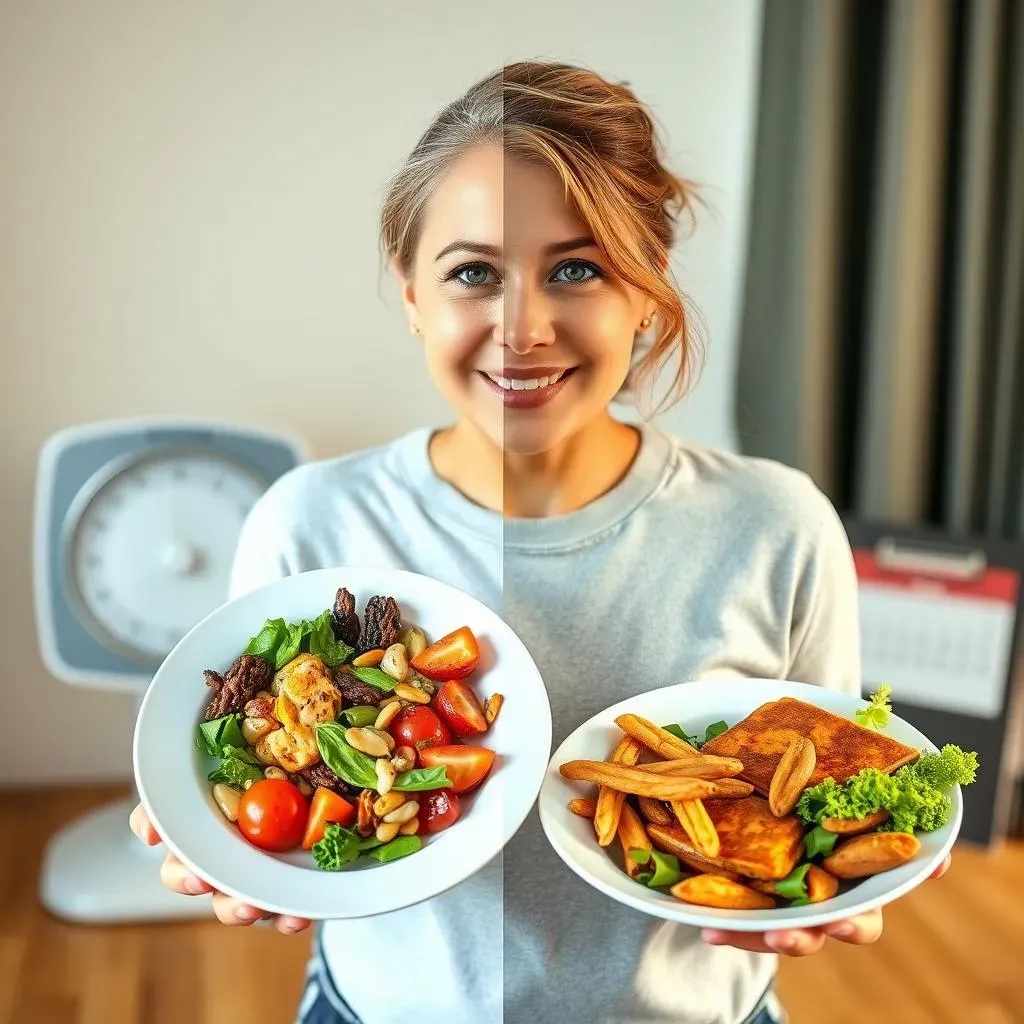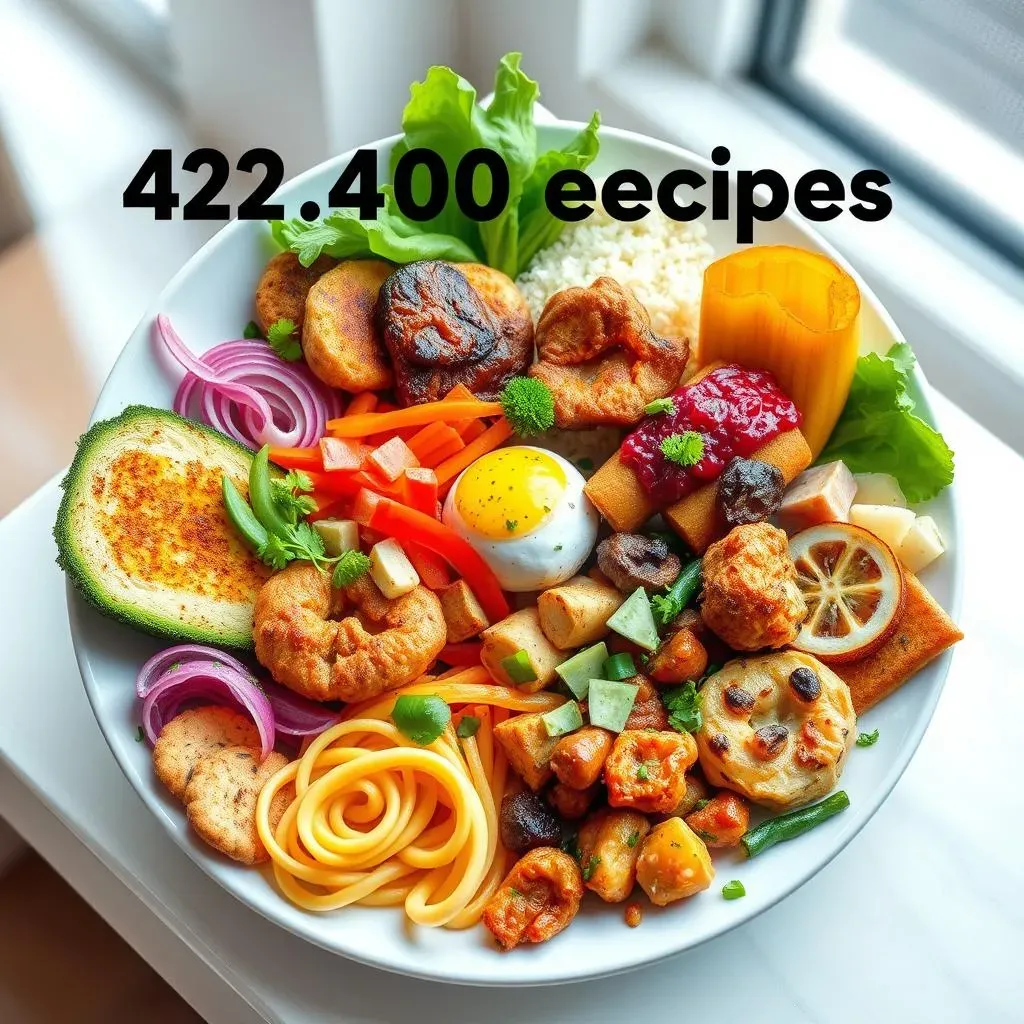Table of Contents
Are you on a journey to shed some pounds and wondering "what is healthy dinner for weight loss?" It's a common question, and the answer isn't as complicated as you might think. Losing weight isn't just about cutting calories; it's about nourishing your body with the right foods. This article will serve as your guide, breaking down the key elements of a weight-loss-friendly dinner. We'll explore the ideal calorie ranges for both men and women, focusing on incorporating lean proteins and plenty of veggies. I'll also highlight the importance of physical activity, because let’s be real, diet alone won't do the trick. Get ready to discover 42 delicious dinner ideas, all under 400 calories, which will make your weight loss journey both enjoyable and achievable. These recipes are quick, easy, and won't leave you feeling hungry or deprived. So, let’s jump in and make dinner the easiest part of your day, while working towards your goals.
Understanding Weight Loss and Calorie Needs

Understanding Weight Loss and Calorie Needs
The Basics of Calorie Deficit
so you're thinking about weight loss, right? It's really all about calories, like money in a bank account. To lose weight, you need to spend more calories than you take in. Think of it as creating a "calorie deficit". It’s not about starving yourself; it's about being smart with what you eat and how active you are. If you eat more than your body needs, it stores the extra as fat. But if you consistently eat less, your body starts using that stored fat for energy, and that’s where the magic happens.
For most folks, a safe way to lose weight is to cut about 500 calories from your daily intake. This might sound like a lot, but it's manageable if you're making the right choices. Now, this isn't a one-size-fits-all deal. What works for your friend might not work for you. Things like your gender, age, and how active you are all play a role in how many calories your body needs. But generally, women should aim for about 1,200 to 1,400 calories a day, while men can go for around 1,800. Keep in mind, these are rough estimates, and it's always a good idea to talk to a doctor or nutritionist for advice that's tailored just for you.
Why Dinner Calories Matter
Now, why are we focusing on dinner specifically? Because it’s often the meal where we tend to go overboard. After a long day, it’s easy to reach for comfort food, which can be loaded with extra calories. If you're trying to lose weight, it’s crucial to keep your dinner calories in check. Aim for 300 to 400 calories for women and 400 to 500 calories for men at dinnertime. But, and this is a big but, it's not just about the number of calories. The quality of those calories is just as important. You want to focus on foods that are nutrient-dense and satisfying, not empty calories that leave you hungry an hour later.
Think lean proteins, like chicken or fish, which help you feel full, and lots of veggies, which are packed with vitamins and fiber. Fiber is your friend, it keeps you feeling full for longer. Avoid those processed foods and sugary drinks that can quickly derail your progress. Remember, dinner should be a balanced meal that supports your weight loss goals, not a free-for-all. So, plan ahead, make smart choices, and your body will thank you for it.
Daily Calorie Intake | Women | Men |
|---|---|---|
For Weight Loss | 1,200-1,400 calories | 1,800 calories |
Dinner Calorie Goal | 300-400 calories | 400-500 calories |
Healthy Dinner Guidelines for Weight Loss

Healthy Dinner Guidelines for Weight Loss
Building a Balanced Plate
so you've got the calorie thing down, but what should actually be on your plate? It's not just about hitting a number, it's about nourishing your body with the right stuff. Think of your dinner plate as a pie chart. You want to aim for about half of it filled with non-starchy veggies. Things like broccoli, spinach, peppers, and carrots are your go-to's. They're low in calories, high in fiber, and loaded with vitamins. Then, about a quarter of your plate should be lean protein. Chicken breast, turkey, fish, and beans are great choices. These will help you feel full and keep your muscles happy. The remaining quarter can be a healthy carb, like quinoa, brown rice, or sweet potato. These provide energy without spiking your blood sugar too much.
Don't be afraid of fats either, but focus on the good ones. A drizzle of olive oil, some avocado slices, or a handful of nuts can add flavor and keep you satisfied. Just remember, portion control is key, even with healthy fats. The idea is to create a balanced meal that provides all the nutrients you need without overdoing it on the calories. So, forget the fad diets and focus on building a plate that’s both delicious and supportive of your goals. It's about making smart choices that add up to big results over time. And remember, variety is the spice of life, so mix it up and enjoy the process.
Smart Swaps and Portion Control
Now, let's talk about some simple swaps to make your dinners healthier without sacrificing flavor. Instead of fried chicken, try grilled or baked. Swap white rice for brown rice or quinoa. Opt for whole-wheat pasta over white pasta. And when it comes to sauces, try to choose tomato-based ones instead of creamy ones, or better yet, use herbs and spices to add flavor without the extra calories. These small changes can make a big difference. Portion control is also crucial. Use smaller plates and bowls to help manage your portion sizes. Sometimes, we tend to eat what’s in front of us, so a smaller plate can trick your brain into feeling satisfied with less. It's also a good idea to eat slowly and mindfully. Take your time, savor each bite, and pay attention to your body’s hunger cues. That way, you'll know when you're actually full, rather than just eating because it’s there.
Another trick is to load up on those veggies first. Sometimes, if you fill up on the healthy stuff, you’ll naturally eat less of the higher-calorie items. It’s all about making these small, consistent choices that add up to big wins. Don't try to overhaul everything at once. Start with one or two swaps, and as you get comfortable, add more. It's about making sustainable changes that fit into your lifestyle. So, be smart, be consistent, and most importantly, be kind to yourself. Weight loss is a journey, not a race, and it’s okay to make mistakes along the way.
Swap This | For This |
|---|---|
Fried Chicken | Grilled or Baked Chicken |
White Rice | Brown Rice or Quinoa |
White Pasta | Whole-Wheat Pasta |
Creamy Sauce | Tomato-Based Sauce |
42 Delicious Dinner Recipes Under 400 Calories

42 Delicious Dinner Recipes Under 400 Calories
Time to Get Cooking
Alright, let's get to the fun part – the food! I know you've been waiting for this. We’re talking about 42 amazing dinner recipes, all clocking in under 400 calories. These aren't just some sad salads either, we’ve got variety and flavor on the menu. Think of dishes like Japanese chicken with greens and rice – it's light, filling, and has that umami kick that makes you feel satisfied. Then there’s healthy Spanish chicken and beans, a hearty dish packed with protein and fiber. And for those busy weeknights? We have a healthier chicken and veggie one-pot that’s both easy to make and easy to clean up. These aren’t your average diet meals; they're real food for real people who want to lose weight without sacrificing taste.
We’ve made sure to include something for everyone, so whether you are gluten-free, low-carb, or just looking for some high-protein options, you'll find something that fits your needs. I'm talking about everything from light and refreshing Mediterranean-inspired dishes to warm and comforting soups and stews. The best part? They’re designed to be quick and easy, so you won’t spend all evening in the kitchen. We know that nobody has time for complicated recipes, so we've kept it simple, focusing on fresh ingredients and easy-to-follow steps. With these recipes, you can keep your weight loss on track without feeling like you're missing out on delicious food. It's all about balance and making smart choices that you can stick with long-term.
Recipe Type | Example Dish |
|---|---|
Asian-Inspired | Japanese Chicken with Greens and Rice |
Mediterranean | Chicken and Veggie Skewers |
Hearty | Healthy Spanish Chicken and Beans |
Quick & Easy | Healthier Chicken and Veggie One-Pot |
The Importance of Exercise and Balanced Diet

The Importance of Exercise and Balanced Diet
Moving Your Body and Nourishing It
so we've talked a lot about food, but let's be real, diet is just one piece of the puzzle. Exercise is the other big player, and it’s just as important when you are thinking about "The Importance of Exercise and Balanced Diet". You can’t expect to lose weight and feel great if you’re just sitting on the couch all day. Think of exercise as the gas that fuels your weight loss engine. It helps you burn extra calories, yes, but it also boosts your metabolism, builds muscle, and improves your overall health. The more muscle you have, the more calories you burn, even when you're resting. So, it's not just about those sweat sessions; it's about building a body that’s working for you all the time. And let's not forget the mental benefits. Exercise can reduce stress, boost your mood, and improve your sleep. It's like a natural happy pill that also helps you lose weight. It’s a win-win if you ask me.
Now, you don’t need to become a marathon runner overnight. Start with something you enjoy. Maybe it’s dancing, swimming, cycling, or even just going for a brisk walk. The key is to find something that you can stick with consistently. The goal is to aim for about 2 ½ to 5 hours of moderate-intensity exercise per week, or 1 ¼ to 2 ½ hours of vigorous-intensity exercise. And don’t forget to incorporate some muscle-strengthening activities at least two days a week. This doesn’t mean you have to lift heavy weights at the gym. Bodyweight exercises like push-ups, squats, and lunges can be just as effective. So, find what works for you, make it a habit, and watch as both your body and mind transform. Remember, it's all about progress, not perfection, so be patient with yourself and celebrate the small victories along the way.
The Perfect Pair: Diet and Exercise
So, you've got the healthy eating part down, and you're moving your body, now what? Well, it’s about seeing how these two things work together. Eating well gives your body the fuel it needs to perform at its best, and exercise helps you burn extra calories and build a strong, healthy body. It’s like a perfectly balanced partnership where each one supports the other. If you’re only focusing on one, you’re missing out on the full benefits. A balanced diet will help you lose weight while making you feel great, and exercise will help you tone up and boost your mood. It's the best of both worlds, and it’s a much more sustainable way to live than just focusing on fad diets or intense workouts. It's about building a lifestyle that you can maintain in the long run.
Remember, it's not about restricting yourself or pushing yourself to the limit. It’s about making smart, consistent choices that support your overall well-being. It’s about making choices that add up to a healthier, happier you. So, don’t be afraid to experiment with different types of exercises and healthy recipes. Find what you enjoy, stick with it, and be patient. The results won’t happen overnight, but if you’re consistent, you’ll be amazed at what you can achieve. And remember, it’s all about the journey, not just the destination. So, enjoy the process, celebrate your progress, and don’t be afraid to ask for help along the way. It’s a marathon, not a sprint, so pace yourself and keep going. You’ve got this.
Activity | Time per Week |
|---|---|
Moderate Intensity Exercise | 2 ½ - 5 hours |
Vigorous Intensity Exercise | 1 ¼ – 2 ½ hours |
Muscle Strengthening | At least 2 days |
Wrapping Up Your Weight Loss Dinner Journey
So, there you have it, a plethora of ideas to help you answer "what is healthy dinner for weight loss". Remember, it's not about restrictive diets but about making smart, sustainable choices. You've got 42 delicious recipes to keep your taste buds happy and your calorie count in check. Pair these dinners with regular physical activity, and you're well on your way to achieving your weight loss goals. Don't forget, this is a marathon, not a sprint. Be patient with yourself, celebrate small victories, and keep making those healthy choices. A balanced diet and regular exercise are your best friends in this journey. Now, go ahead, get cooking, and enjoy the process of becoming a healthier you!